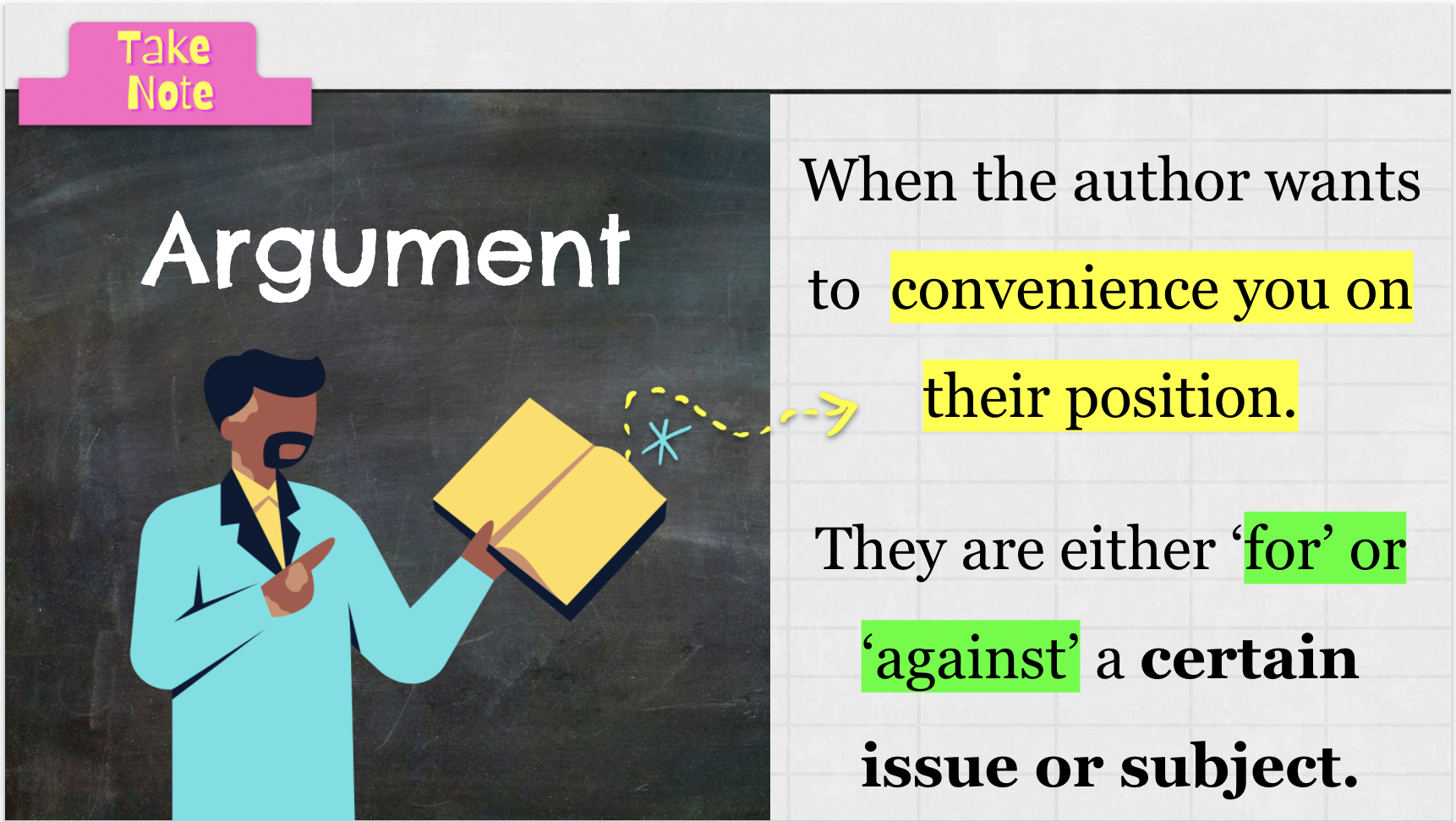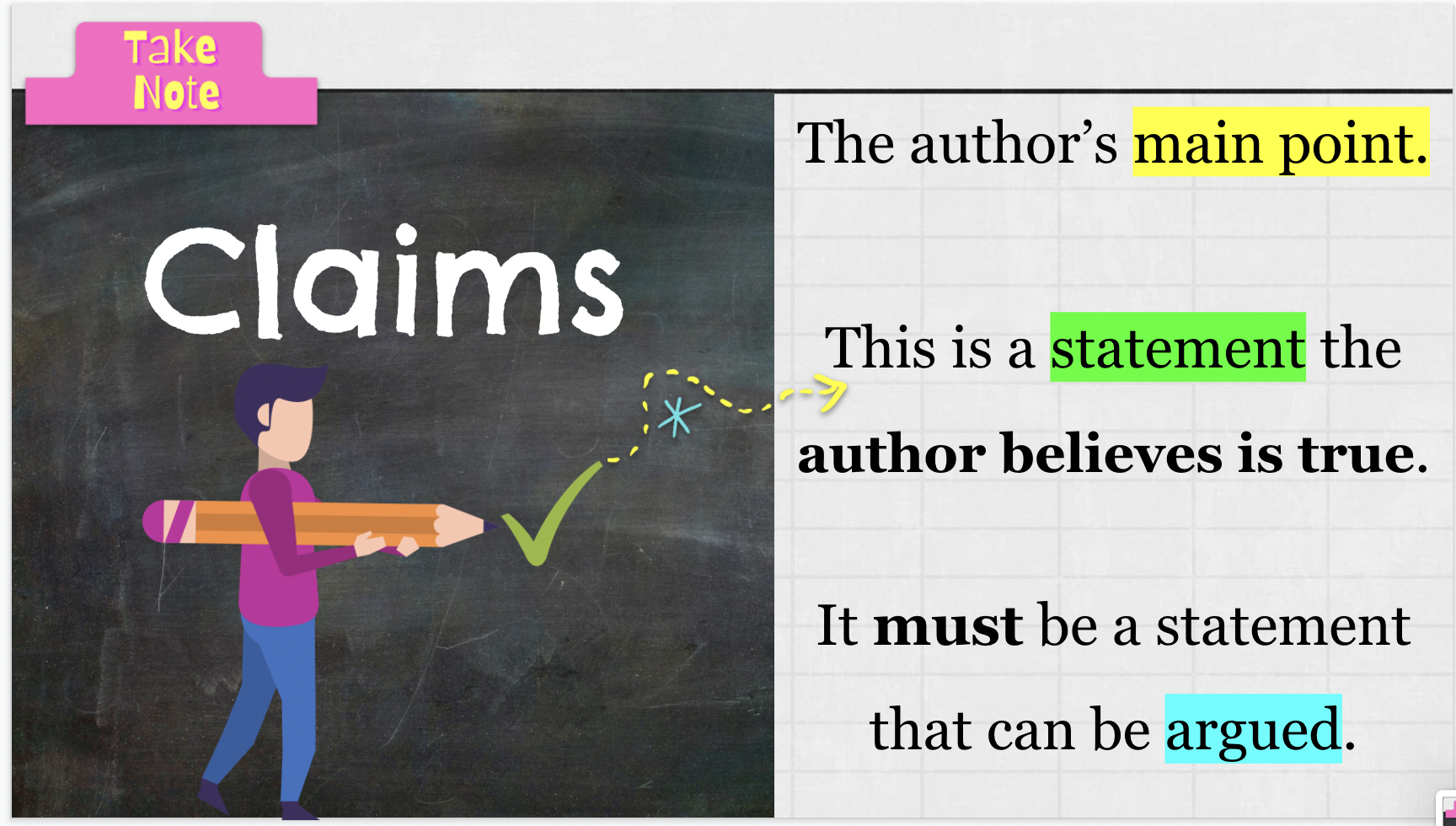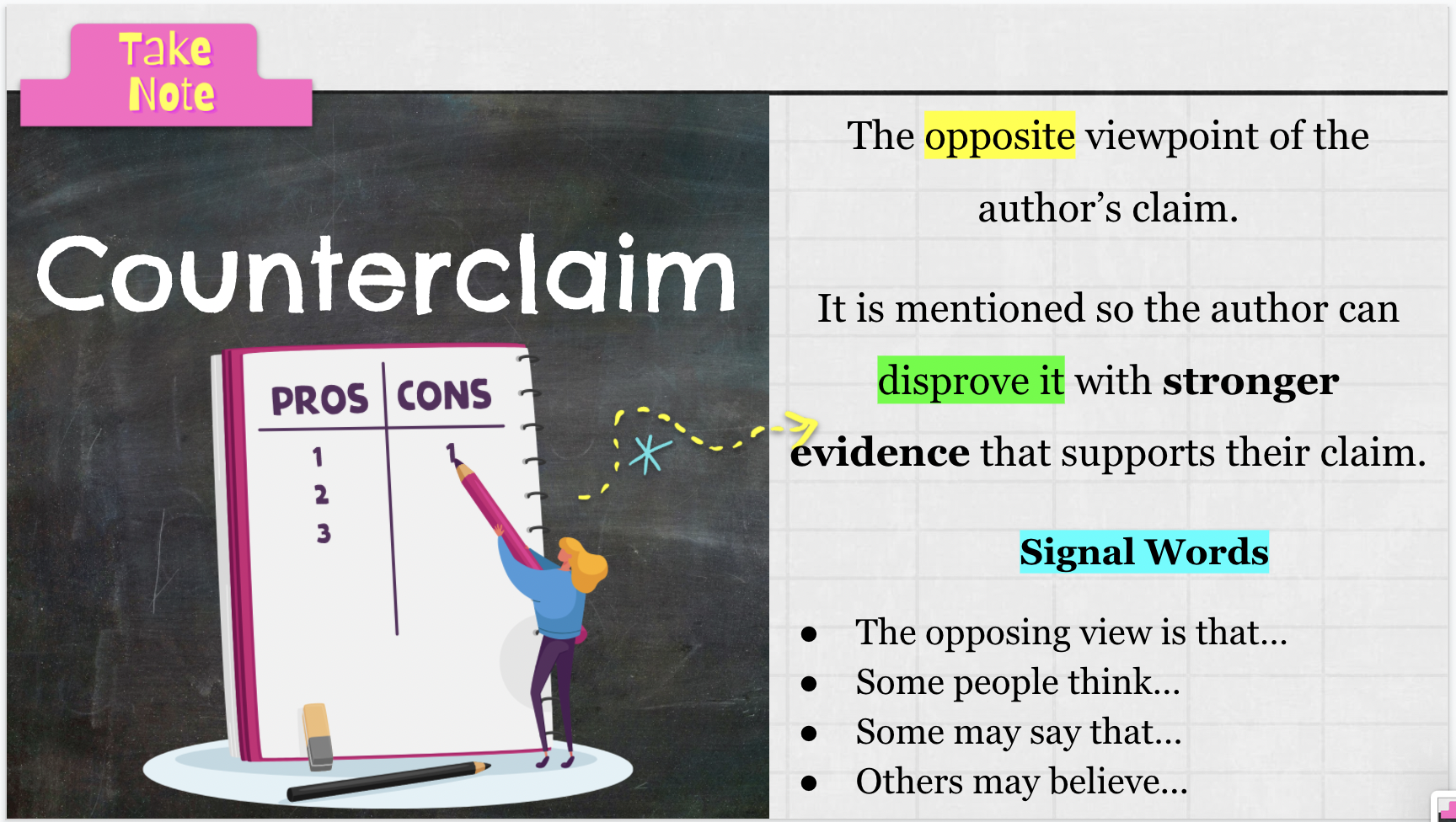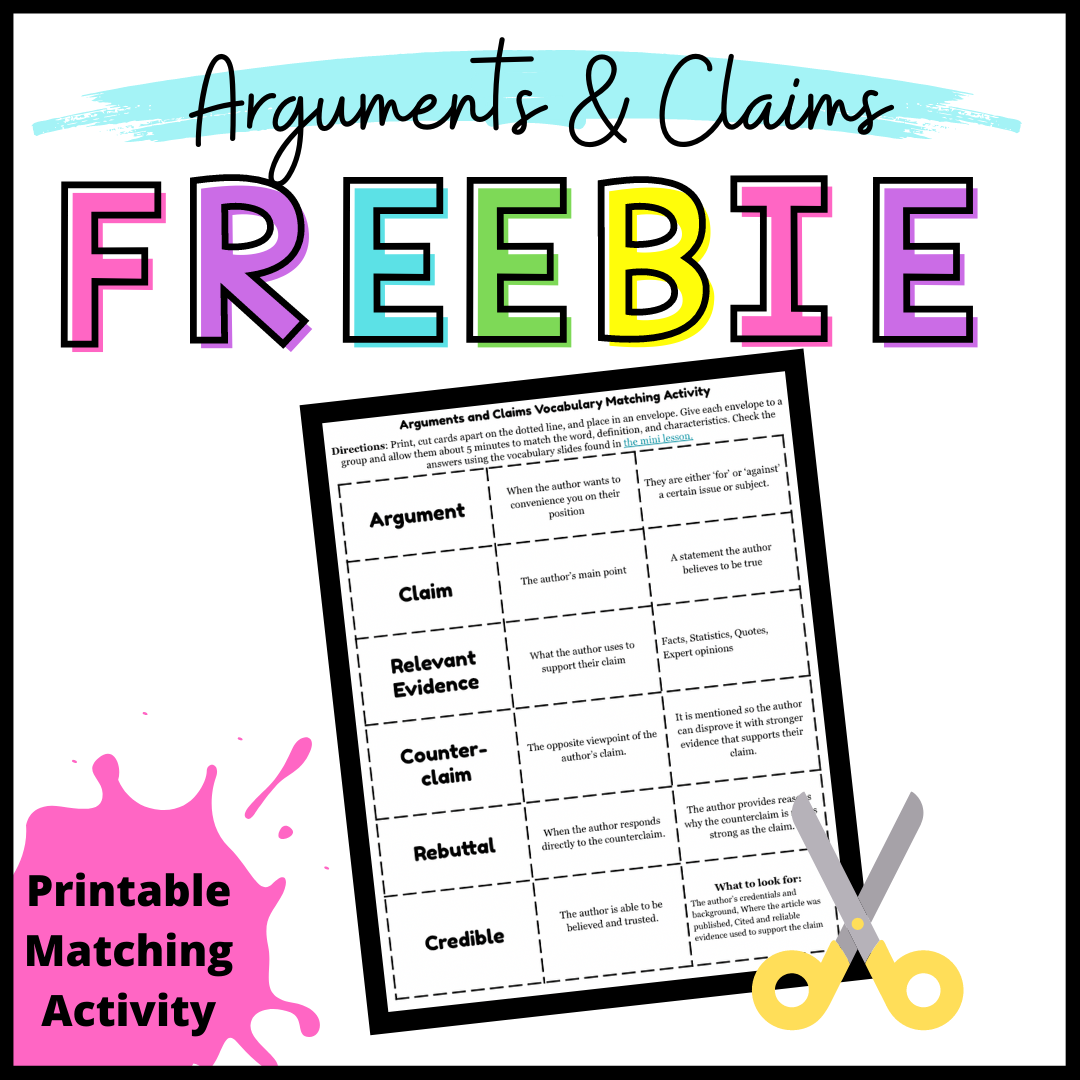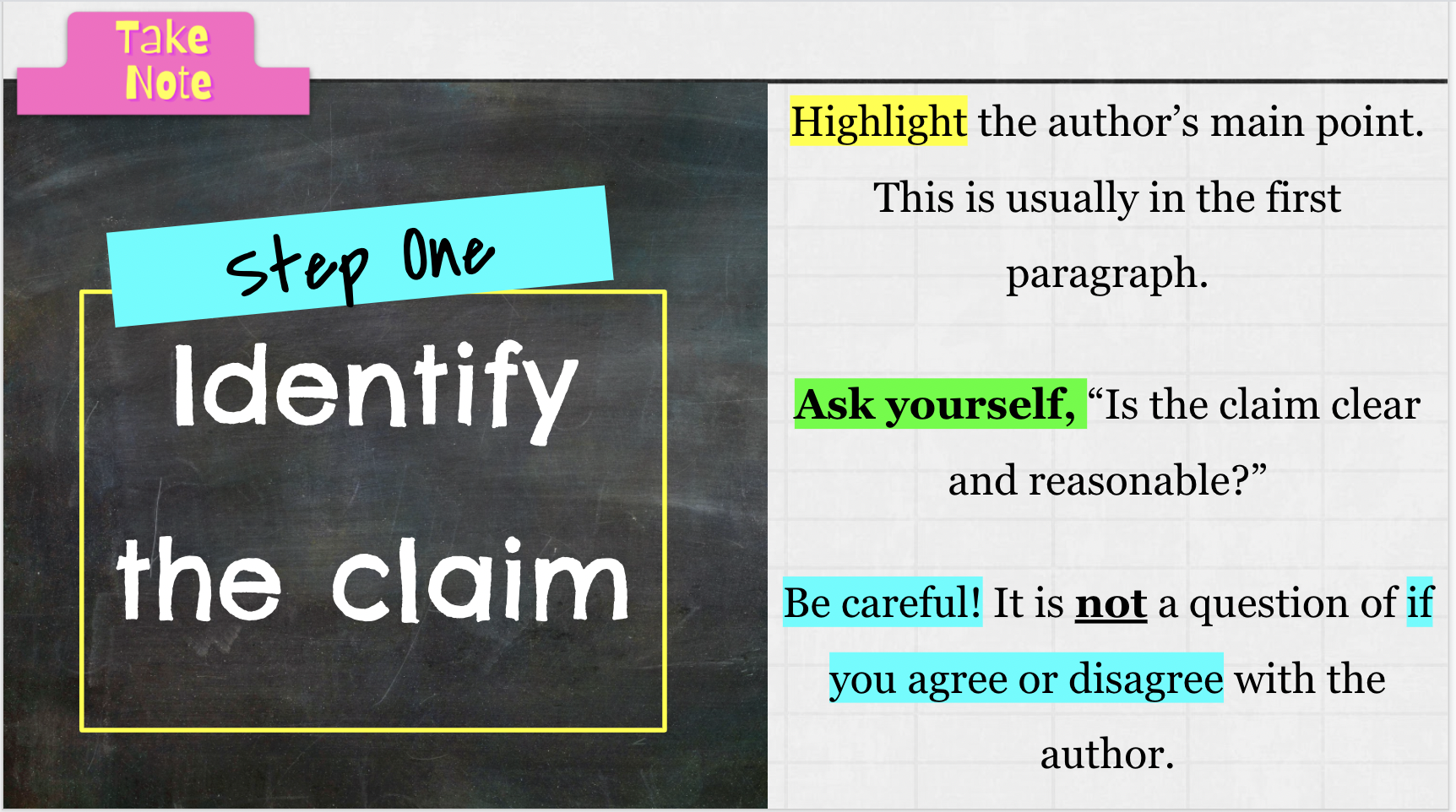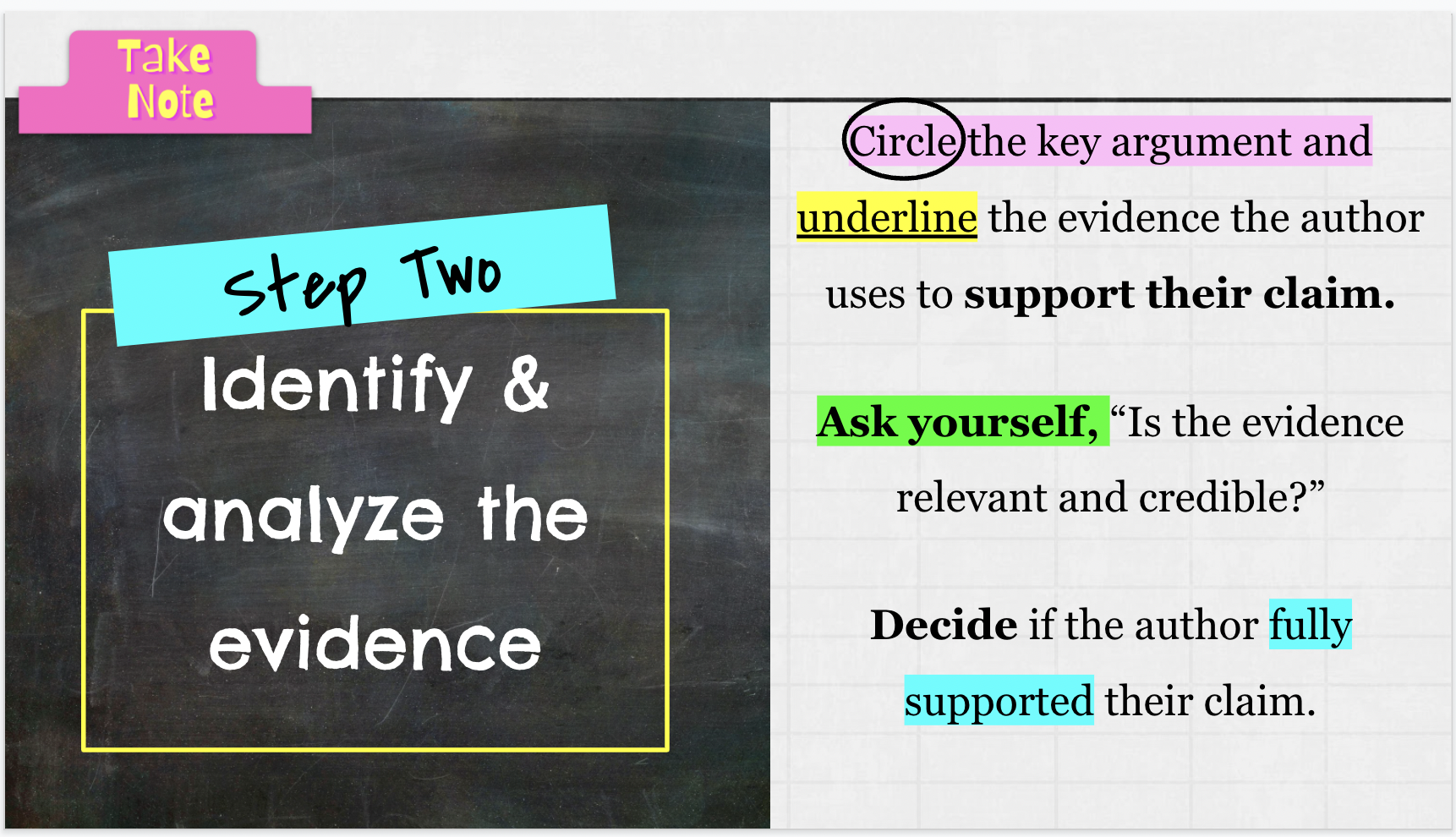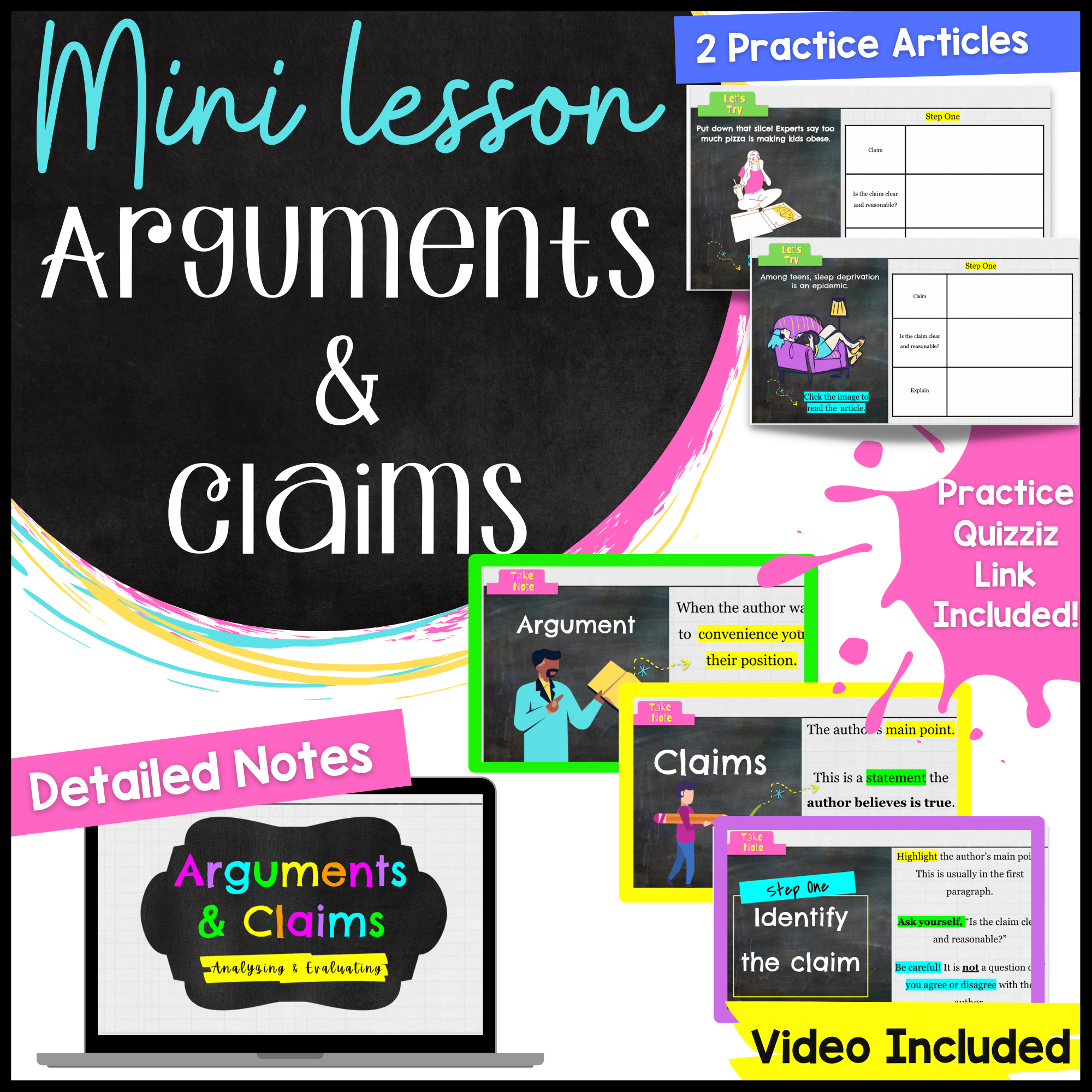How to Teach Argument and Claims
I think almost every teenager knows how to argue.
At least, that has been my experience with my personal teenager and the 1,000+ I have taught throughout the years.
However, when they are asked to locate an argument in a text, they are suddenly not the experts we thought they were.
Here are the 4 steps (plus a bonus ) I use to teach my students the basics of how to identify and analyze arguments and claims.
Step 0: Vocabulary
It is essential that everyone has the same understanding of key vocabulary words so this is always the foundation of my lesson.
For this unit, students need to know and understand - Argument, Claim, Relevant Evidence, Counterclaim, Rebuttal, and Credible.
Vocab Teaching Tip:
I have found that if students engage with the vocabulary words before I give them the fancy language arts definitions, then they are more likely to remember and connect with the concepts. It’s kind of like priming the pump.
Before we start the mini-lesson, I have my students complete a quick matching activity with their table groups. Each group is given an envelope with cards that have the vocabulary word, the definition, and characteristics. Students work together for five minutes to try and make matches. When the timer goes off, we check their matches with the fancy definitions on the Google Slides.
The matching activity makes them invested in learning the definitions. If you would like this matching activity, it’s yours! Just fill out the form on the right to get your Google Slides copy.
Now that we have a solid foundation, it’s time to teach students how to break down an argumentative essay. When teaching this, I start with a high interest text that I can use to model my thinking. Newsela has a great article about pizza making kids obese that I use with my mini lesson or you can quick Google search for examples of argumentative essays.
Step 1: Claim It!
Because we put the time in with the vocabulary section, students already know that the claim is the author’s main point. The first step for breaking down the argumentative text should be identifying that claim.
When I am modeling this for my students, I read the first paragraph out loud and say, “As a good reader, I’m thinking to myself, what does the author believe to be true?” From there, I walk students through my thinking process of what I know based on what I read.
I ask my students to scan the first paragraph to see if they can find a sentence that clearly states what the author believes to be true and place their finger under the sentence. When I see all of the students have their finger on a sentence, I highlight the thesis statement that contains the claim. I ask my students to raise their hand if they had the same sentence as I did. Most of the time, everyone raises their hand. Doing this step is a shot of confidence for students when they are just starting out with this concept.
Side note - I always make sure they know they do not have to agree with the author. We are just identifying what the author believes to be true.
Step 2: Back it up and Work It!
(This is totally a Lil Tecca reference that might not be the most appropriate for your students - you might want to stick with Back it Up. 😂)
Now it’s time to dissect the meat of the paper!
I tell my students that what makes an argumentative paper different from an opinion piece is the key arguments and evidence. Authors can not just throw a claim out there and not back it up with some reasons. It is our job as top-notch analytical readers to pick out the key arguments and determine if the evidence fully supports the argument.
When we first do this together, I read the first two body paragraphs and model my thinking. I say, “As a good reader, I’m thinking, WHY does the author believe their claim and HOW did they back it up?” I ask for their input and show them how to circle the key argument and underline the supporting evidence.
For the last body paragraph, I read it aloud and have the students work with their table groups to identify the key argument and supporting evidence.
After we read the body paragraphs, we go back to the evidence we underlined. If we determine it’s relevant and credible, we put a checkmark next to it. If we have mostly checks, then we know the author can be trusted.
Step 3: Take me to the other side
After we read the text, I ask, “Did the author acknowledge and address what ‘the other side’ might say about their position?”
I set the timer for three minutes and have the partner groups go back to find where the author discussed “the other side.”
When they find it, I have them put an “x” next to it. I’m usually walking around during this part so I can easily check in with each group and make sure they are on task. If there are groups that are struggling, I have them look at the signal words that we learned about in our vocabulary section.
After I notice most of the class has marked the counterclaim, I go back to modeling. I mark the counterclaim with an “x” on my paper and then show them how to circle reasons and evidence the author provides in response to show their viewpoint is superior.
This is a great time to set the timer for three minutes and have students turn and talk about WHY the author included another perspective in their writing. Allow time to share thoughts and ideas.
Step 4: A Closer Look
I think looking at the text and determining the tone is super important. It can help the reader determine the author’s purpose. With that in mind, our final step is to look for words and phrases the author uses to appeal to the audience’s emotions and to identify descriptive language or imagery included that creates a certain mood. We put a box around these words and phrases and write in the margins about the effect.
After I model how to annotate with the four steps, I allow students to practice breaking down an argumentative text with a partner and then independently before we move on to application activities.
Before you get going, let your students know that this is not a one and done type of activity. This is a deep dive into a concept, so they are going to read the paragraphs more than one or two times in order to really be able to analyze the text.
A lot of times, managing expectations will help with student behavior and attitude.
